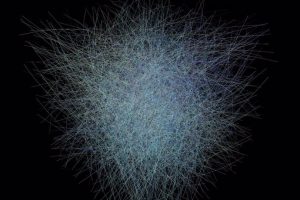Gravitational waves are ripples or wrinkles in space-time that, like waves in a pond propagated from the point where a stone has fallen, travel at the speed of light from the place where they were generated. . The existence of gravitational waves was predicted by Albert Einstein in 1916, as part of his general theory of relativity. These waves originate in the most violent events in the universe, and they carry information about that origin.
LISA is a project to establish a gigantic gravitational wave observatory in space. It is not necessary to build an immense structure, but it is enough for it to be virtual. Using interferometry, it will be enough to place three identical spacecraft, flying in formation. They will orbit around the Sun following the Earth, forming an equilateral triangle in space, each of whose sides will have a length of 2.5 million kilometers. The resulting virtual observatory will be much larger than the Earth-Moon system.
The ships will exchange laser beams, which will make it possible to make ultra-precise measurements, on the order of picometers (a picometer is one millionth of a micrometer) and detect distortions attributable to the passage of a gravitational wave.
With this unique and gigantic observatory, which will enter service in the mid-2030s, it will be possible to capture gravitational waves of types that would not be feasible to detect from Earth with gravitational wave observatories installed on Earth. With this detection power, it will be possible, among other things, to capture the gravitational “hum” of the universe emitted seconds after its creation.
The LISA (Laser Interferometer Space Antenna) mission is led by the European Space Agency (ESA) in collaboration with the American NASA.
The twin telescopes on board each spacecraft will transmit and receive infrared laser beams to track their companions. NASA provides the six telescopes for the LISA mission spacecraft.
A full-scale prototype of the six telescopes has already been manufactured and reviewed.
The prototype, manufactured and assembled by the company L3Harris Technologies in Rochester, New York, United States, arrived at NASA’s Goddard Space Flight Center last May, and in the months since then it has been meticulously examined by specialized personnel from the mission.
Prototype of the telescope model that will be used at the LISA observatory. Here it is shown shortly after its arrival at NASA’s Goddard Space Flight Center. (Photo: NASA / Dennis Henry)
The primary mirror is coated with gold to better reflect infrared laser rays and reduce heat loss from the surface exposed to the cold of space, since the telescope will work best when it is close to the temperature range that humans find comfortable.
The prototype is made entirely of a material called Zerodur, made by the Schott company in Mainz (Germany). This material is widely used for telescope mirrors and other applications that require high precision, since its shape changes very little over a wide range of temperatures. (Fountain: NCYT by Amazings)







![[Img #74675]](https://thelatestnews.world/wp-content/uploads/2024/12/They-discover-a-new-class-of-X-ray-sources-in-the-150x150.jpg)


![[Img #74176]](https://thelatestnews.world/wp-content/uploads/2024/10/The-telescopes-of-the-future-LISA-gravitational-wave-space-observatory.jpg)

![[Img #74675]](https://thelatestnews.world/wp-content/uploads/2024/12/They-discover-a-new-class-of-X-ray-sources-in-the-300x200.jpg)

Add Comment